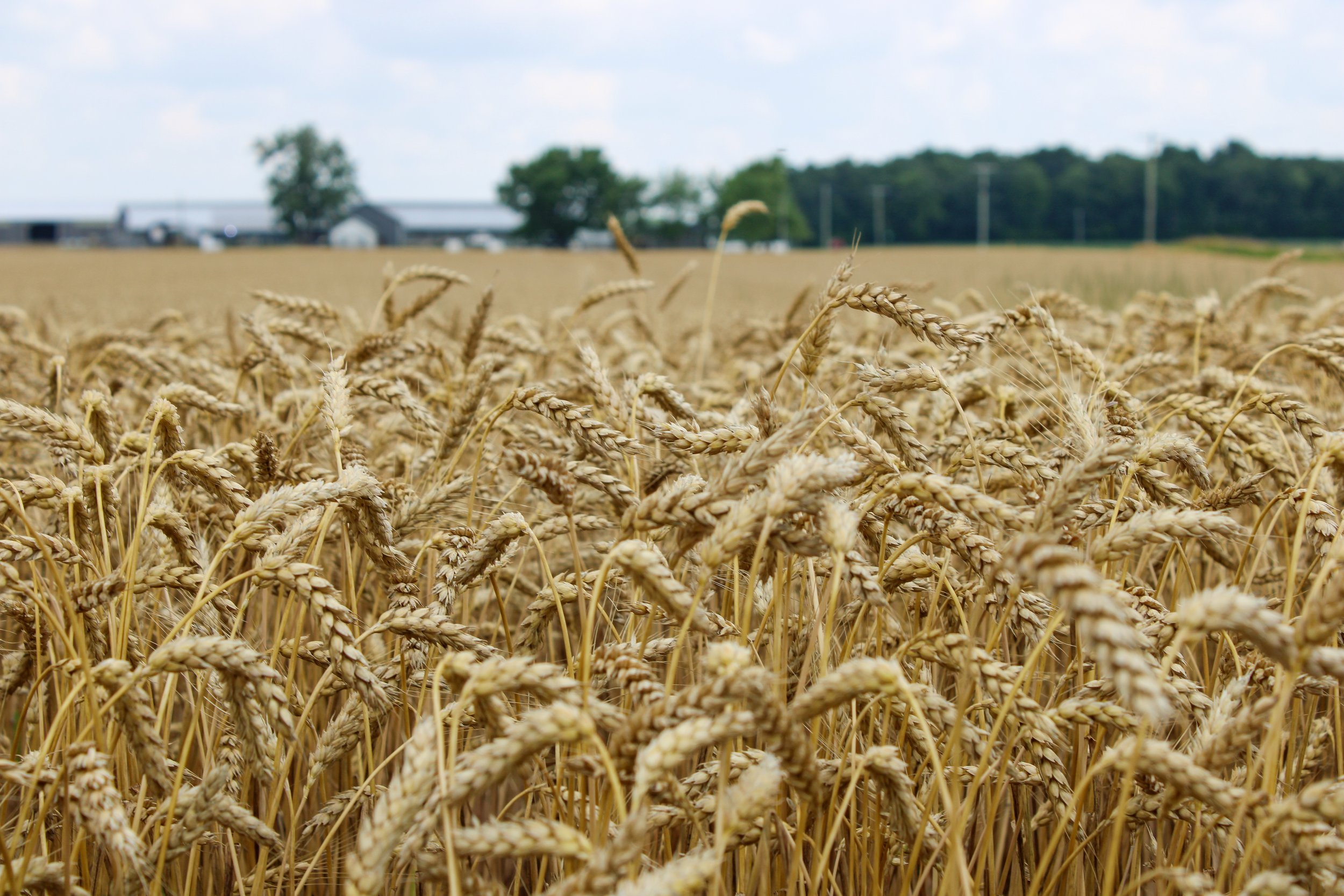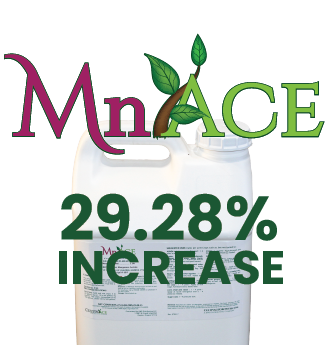
5% Manganese Acetate Liquid Fertilizer
MnAce, the 5% Manganese Acetate liquid fertilizer from CultivAce, addresses the challenge of manganese deficiency. In soils with higher pH levels (above 7 pH) manganese availability is affected. Manganese (Mn), as a nutrient, plays a crucial role in enhancing plant reproduction and seed formation. By delivering manganese to the plant, MnAce ensures that this essential micronutrient fertilizer is readily accessible to correct manganese deficiency.
Manganese availability can be affected by specific factors, including high pH, high organic matter content, heavy iron or iron applications, high calcium applications, and significant zinc or zinc fertilizer applications. MnAce provides manganese to correct manganese deficiency.
Functions of Manganese as a Nutrient
Assimilation of CO2 in Photosynthesis: Manganese is involved in the process of assimilating carbon dioxide (CO2) during photosynthesis. It aids in the conversion of CO2 into carbohydrates, which serve as the primary source of energy for plant growth and development. Ensuring that plants have sufficient manganese to support efficient photosynthesis, results in enhanced energy production and overall plant vitality.
Assimilation of Nitrate Nitrogen: Manganese is essential for nitrate nitrogen assimilation in plants. Nitrate nitrogen is a vital component of amino acids, proteins, and other nitrogen-containing compounds crucial for plant growth and function. By supplying plants with adequate manganese, Manganese facilitates the efficient assimilation of nitrate nitrogen, supporting optimal nitrogen metabolism and promoting healthy plant growth.
Essential for Seed Formation: Manganese plays a critical role in seed formation and development. It contributes to pollen viability, fertilization, and proper embryo development, ensuring viable and healthy seeds. Manganese is required for optimal seed formation, enhancing crops' reproductive capacity and yield potential.
Electron Transport During Photosynthesis: Manganese is involved in electron transport processes during photosynthesis. It participates in the transfer of electrons, which is essential for generating energy-rich molecules like ATP (adenosine triphosphate) and NADPH (nicotinamide adenine dinucleotide phosphate). By supporting efficient electron transport, manganese promotes robust photosynthetic activity and enhances overall plant growth and productivity.
Incorporating MnAce 5% Manganese Acetate Fertilizer into your fertilization program ensures that plants have access to the necessary manganese to correct manganese deficiency. Manganese is required for optimal growth, reproduction, and seed development. CultivAce's commitment to quality ensures that you receive a reliable manganese acetate liquid fertilizer to correct your crop's manganese deficiency.
Soil factors that can prevent manganese uptake:
High pH
High organic matter
High iron or iron applications
High calcium applications
High zinc or zinc applications
Benefits of Manganese as a Nutrient
Assimilates CO2 in photosynthesis for enhanced energy production.
Facilitates nitrate nitrogen assimilation for optimal nitrogen metabolism.
Essential for seed formation and reproductive capacity.
Supports electron transport during photosynthesis for robust plant growth.
Downloads
Trials
Guaranteed Analysis
- Manganese (Mn) ... 5.0%
9.85 lb/gal @ 68℉
COMPATIBILITY: This product is compatible with most pesticides, however, it is not possible to test all pesticide mixes. A jar test is recommended before use.
General Use Recommendations
DILUTION: Field and row crops: 3 to 20 Gallons by air, 10 to 40 gallons by ground. Tree crops: concentrate 50 to 100 gallons, Dilute 100 to 500 gallons.
NET CONTENTS: 2.5 GALLONS (9.46L)
Net weight 23.875 pounds
Suggested Uses
(rates par acre)
Crops such as, but not limited to:
Alfalfa and clover grown for seed :: 1- 4 pints at bud stage and full bloom.
Apples, cherries, peaches, almonds, walnuts, pears, stone, pome fruits, citrus and nuts :: 1 – 4 pints per acre at bud break, full bloom and post harvest.
Barley, oats, wheat, rice, and other small grains :: 1 – 4 pints – Apply at tillering, early boot and flag leaf emergence.
Beans, peas and other legumes :: 1 – 3 pints – Apply at early bud, repeat after bloom.
Cabbage, broccoli, carrots, onions, tomatoes and other vegetables grown for seed :: 1 – 4 pints – Apply at bud stage, full bloom and 2 weeks later.
Corn, field and sweet :: 1 – 4 pints – Apply at tassle emergence and 2 – 4 weeks as needed.
Sugar Cane :: 1—4 pints per acre.
Grapes :: 1 – 4 pints – Apply dormant, prebloom and post-bloom as needed.
Hops :: 1 – 4 pints
Hazelnuts, pistachios, other deciduous trees :: 1 – 4 pints – Apply at bud break. Repeat every two trees to three weeks and post harvest.
Potatoes :: 1 – 4 pints – Apply at tuber initiation, repeat in 2 – 4 week intervals.
Raspberries, blueberries, strawberries, blackberries :: 1 – 3 pints – Apply pre bloom repeat every 2-4 weeks.
Grasses grown for seed :: 1-4 pints. Apply at leaf, early boot and flag leaf emergence.
Information regarding the contents and levels of metals in this product is available on the internet at http://www.aapfco.org/metals.htm
CAUTION: KEEP OUT OF THE REACH OF CHILDREN, HARMFUL IF SWALLOWED
NOTICE: Manufacturer makes no warranties, expressed or implied. The buyer assumes all risks associated with the use of this product. In the event of damage resulting from a breach of warranty, the buyer agrees to accept a refund of the purchase price as full discharge of the manufacturers liability.







